Craft brewers rolling out variety of vessels
Duluth beer drinkers have more choices than ever — not just in terms of brands and styles, but also in packaging. A variety of new bottle and can styles have entered the local market, and more are on the way.
Two prominent examples are the 750ml bottles Fitger’s Brewhouse used to package its late-winter series, and the 16 oz. cans Castle Danger Brewery will soon release for its seasonal offerings.
Nationwide, traditional 12 oz. bottles are still the most popular craft-beer vessel, but larger 22 oz. “bombers” and 750ml bottles are becoming more common. Thanks in part to better can technology there has also been a surge in canned craft beer, with 16 oz. “tallboys” poised to become the next trend. There are already reports of can shortages.
Bent Paddle Brewing ushered in the local canning craze when the brewery launched in 2013. Its flagship beers are offered in six-packs of 12 oz. cans, while seasonal beers with more expensive ingredients come in four-packs. Some 16 oz. cans are being considered for distribution to music venues in the Twin Cities that are requesting bigger beers to shorten lines at the bar.
Bent Paddle makes the “case for cans” on its website. To summarize, opaque cans keep out light and air, keeping beer fresher. Cans are also lightweight, which makes them easier and cheaper to transport, saving money and fossil fuels. Though 12 oz. cans are its primary container option, Bent Paddle also produces 750ml bottles of specialty beers. Co-founder Laura Mullen says bottles provide a chance to offer limited edition beers for aging, like the Double Black Ale. Bent Paddle recently started doing small bottle runs of one-off beers for sale in its taproom as well.
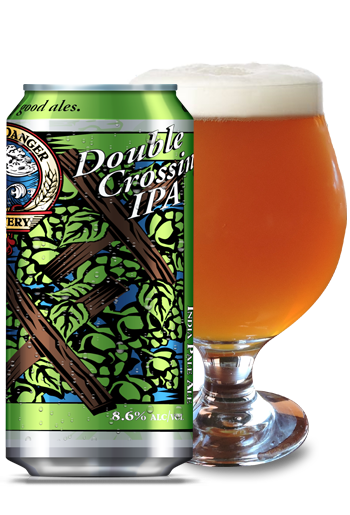 Castle Danger Brewing began canning when its brewery operation expanded to Two Harbors in 2014. Co-owner Jamie MacFarlane says the brewery decided on cans for many reasons, including economics, the brewery’s proximity to wilderness (cans are portable and easy to pack out), better branding capabilities (more printable surface area than bottle labels) and “most importantly: the container itself is 100 percent light-proof, which protects beer from sunlight.”
Castle Danger Brewing began canning when its brewery operation expanded to Two Harbors in 2014. Co-owner Jamie MacFarlane says the brewery decided on cans for many reasons, including economics, the brewery’s proximity to wilderness (cans are portable and easy to pack out), better branding capabilities (more printable surface area than bottle labels) and “most importantly: the container itself is 100 percent light-proof, which protects beer from sunlight.”
The main drawback to cans, according to MacFarlane, is the need to order an entire semi-truckload of each pre-printed beer can. That’s 196,056 12 oz. cans or 154,680 16 oz. cans — so space is a big issue. Space limitations also meant the brewery had to choose between a bottling and a canning line. Castle Danger has produced bombers of seasonal beers in the past, working with a mobile bottling operation, and intends to do so in the future with some barrel-aged beers. A launch of seasonal beers in 16 oz. cans will start in April with the release of Double Crossing IPA tallboys.
While Bent Paddle and Castle Danger extol the virtues of cans, other area breweries are keeping it old school, bottling beer for sale. Some, like Ken Thiemann of Borealis Fermentery, are rabid advocates for bottles, for both practical and aesthetic reasons.
Thiemann’s small brewery in Knife River, founded in 2012, specializes in Belgian-style beer in 750ml bottles. Unlike most beer styles, which are force carbonated before being packaged, traditional Belgian styles achieve their complex flavor profile and lively effervescence through bottle conditioning, a process by which a small amount of yeast remains in the bottle to encourage a secondary fermentation.
In order to make small batch Belgian-style beers the way he wanted — using 750ml bottles — Thiemann had to change Minnesota law. He enlisted the help of State Senator Tom Bakk and the craft beer community to do so back in 2007.
Blacklist Artisan Ales is another area brewery producing Belgian-style beers. Its products are offered in corked 750ml bottles, but there are plans for a brewery expansion that could lead to the packaging of some of beers, like the Rhubarb Wit, in 16 oz. cans. Co-founder Jon Loss acknowledges the advantages of canned beer for its portability, but emphasizes the importance of bottles.
“We feel each format has its place. 750ml bottles are ideal for collecting, aging and bottle conditioning,” says Loss. “We still feel the best representation of our signature styles will be bottle-conditioned in 750mls.”
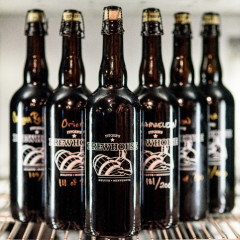 Local brewpubs have sold beer in 64 oz. growler jugs for years, but Minnesota law allows them to also sell 750ml bottles. Fitger’s Brewhouse has taken advantage of this a few times for their biennial late-winter series. This year’s Constellation Series highlighted various dark styles and was packaged in corked 750ml bottles. Brewmaster Frank Kaszuba says it’s a limited run — only 1,000 bottles.
Local brewpubs have sold beer in 64 oz. growler jugs for years, but Minnesota law allows them to also sell 750ml bottles. Fitger’s Brewhouse has taken advantage of this a few times for their biennial late-winter series. This year’s Constellation Series highlighted various dark styles and was packaged in corked 750ml bottles. Brewmaster Frank Kaszuba says it’s a limited run — only 1,000 bottles.
As the area’s oldest brewery, Lake Superior Brewing Company was established well before canning became cool. Brewmaster Dale Kleinschmidt says he intends to keep using standard 12 oz. bottles. Switching to cans isn’t feasible for the brewery right now, he says, as it would take a major investment and a much bigger space for storage.
Voyageur Brewing Company is one of the Northland’s newbies, having opened in 2015. Head brewer Jason Baumgarth says the company struggled to make a decision about packaging, deciding it was more expedient and economical to start bottling. While bottling might seem counterintuitive for a Grand Marais brewery so close to active outdoor pursuits, Baumgarth points out that the Boundary Waters Canoe Area doesn’t allow bottles or cans. Voyageur offers plastic growlers to accommodate the outdoor adventure market.
Baumgarth says Voyageur will likely add cans or switch to canning within the next year or two because prices on canning equipment have come down and options for more locally available materials have expanded.
“Both packaging options have their benefits and drawbacks, but ultimately, it all comes down to the beer that is packaged in them,” says Baumgarth.
No matter the packaging, devoted cerevisaphiles recommend pouring beer into a glass for optimal enjoyment. That’s why Minneapolis-based Surly Brewing Company has the slogan, “Beer for a glass, from a can,” printed on its cans.
Cans vs. bottles – health and environmental considerations
There’s still much debate about cans vs. bottles from an environmental standpoint. Cans are lighter to transport, which means a smaller carbon footprint from their distribution, unless materials are being sourced from far away.
An often neglected consideration is the mining of raw materials that make up cans and bottles. Glass is made from silica, which can be mined in the United States and is relatively easy to access. In comparison, the bauxite ore used to produce aluminum is imported. Bauxite mining has been controversial due to its environmental effect on countries like Malaysia.
If virgin materials are used, it takes twice as much energy to produce a can as it does to produce a bottle, but most cans contain more recycled content than bottles. If a can is produced from recycled content, it cuts the energy output by 95 percent.
On a health note, polymer can-liners are thought to improve the taste of canned beer, but they’re typically hardened by BPA, a chemical many consider harmful. Though the FDA hasn’t banned BPA, it’s notable that the Mayo Clinic encourages people to avoid BPA or switch from aluminum to glass containers.
All things considered, refillable growlers are perhaps the most eco-friendly and health-conscious beer vessel available, though they might not be the most practical or marketable.
Recommended Links:
Leave a Comment
Only registered members can post a comment , Login / Register Here


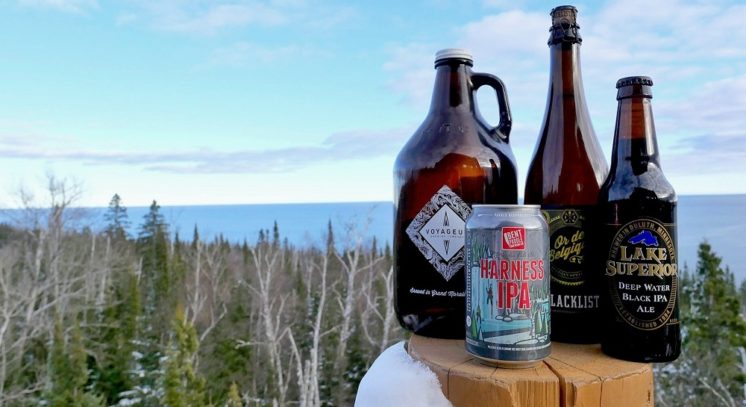
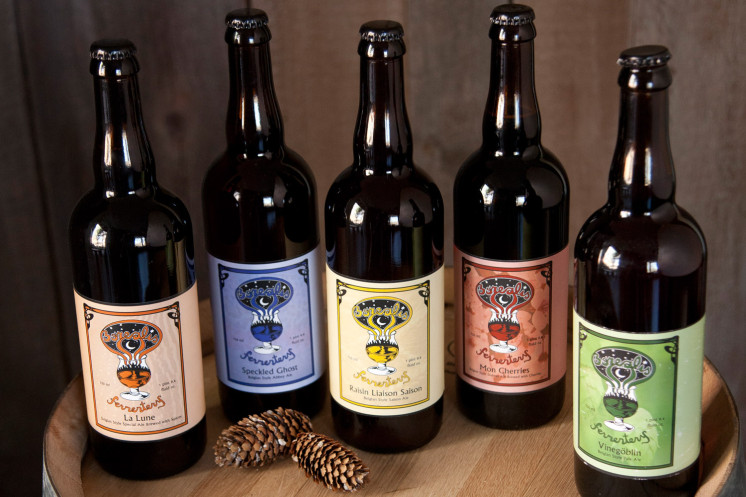
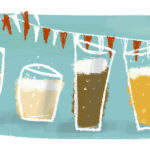

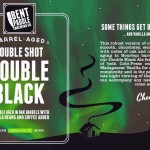
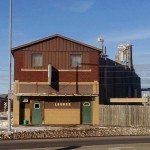








No Comments